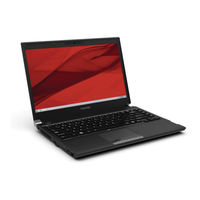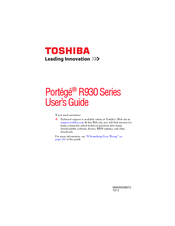Toshiba R930-S9321 Manuals
Manuals and User Guides for Toshiba R930-S9321. We have 2 Toshiba R930-S9321 manuals available for free PDF download: User Manual
Advertisement
Advertisement

